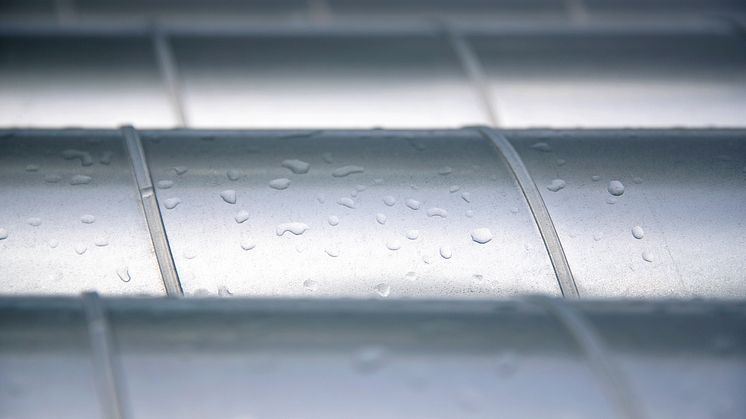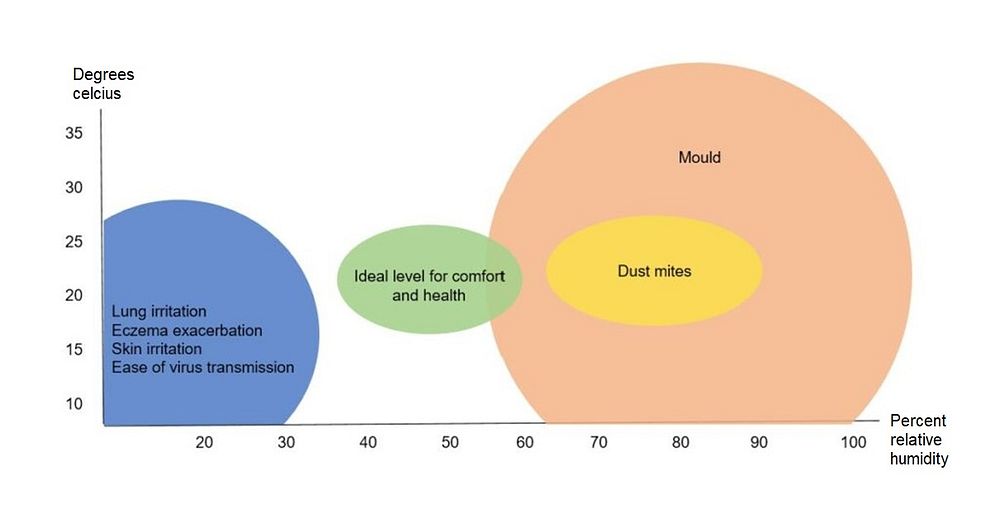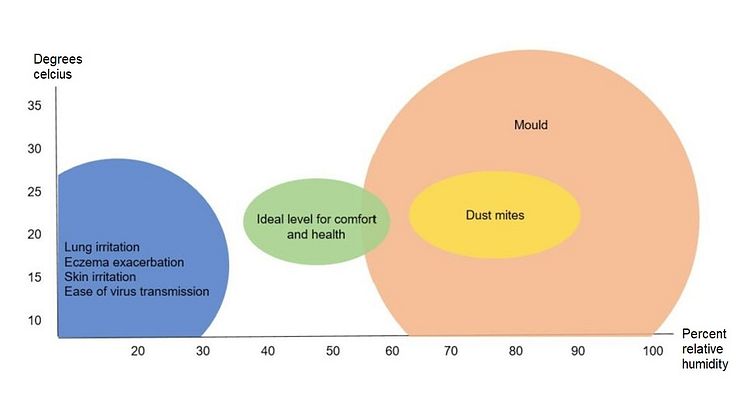
Blog post -
Relative humidity is an absolute health factor
Humidity is, simply put, the amount of moisture present in the air. It can be described by a number of measures: Absolute humidity (g water/kg air), dew point (°C), wet temperature (°C) and others. In this blog post we choose to talk about relative humidity, expressed in percent, as this is most common on indoor air quality monitors. Relative humidity measures water vapor, relative to the temperature of the air. In other words, it is a measure of the actual amount of water vapor in the air compared to the total amount of vapor that can exist in the air at its current temperature.
Temperature is key
Humidity is dependent on temperature as warm air holds more moisture than cold air. With the relative humidity, it changes as rapidly as the temperature does. If the temperature rises, the relative humidity drops. For this reason, heat is often used to keep the humidity down. Similarly, as the temperature drops, the relative humidity increases. If the saturation vapor content is reached, ordinary water will form from the air. Water may not sound that dangerous, but it can cause moisture damage.
Dry air causes discomfort
We experience more discomfort connected to relative humidity during winter. Although it may be snowing and the relative humidity level outdoors is high, once that air comes into a building and heats up, its new relative humidity is very low, making the air very dry. It’s quite common that we get very low levels (10-35%), which can give irritated mucous membranes, causing lining nasal passages to dry, crack and become more susceptible to penetration of cold viruses. Low humidity is also a common cause of nosebleeds, dry eyes, dry skin, sinus discomfort, and sometimes also allergies and respiratory problems.
What to do about dry air
Lowering the temperature gives a higher relative humidity. Therefore, the first and easiest solution when the air is too dry is to lower the temperature somewhat. Often the water added to a room from people, plants, cooking, showers, etc. will be enough to get very high relative humidity near the cold facades.
How does too high humidity levels affect us?
Too high RH-levels (65-100%) can cause moulds and other biological contaminants to thrive. They can also contribute to the growth and spread of unhealthy biological pollutants. Inhaling or touching moulds can cause hay fever-type symptoms like sneezing, runny nose, red eyes and skin rashes. Moulds can also trigger asthma attacks. Too much humidity can also cause damage to the building. Windowsills and skylights are often exposed. In already humid rooms such as the bathrooms, as well as inside very small rooms or closets, high humidity levels can cause damage by collecting and pooling water if ventilation is poor.
What to do about too high humidity levels
Generally speaking, when humidity reaches too high levels, you can increase the ventilation to bring it back down. During warm and rainy summer days you might have a hard time reaching the desired relative humidity level. Make sure to ventilate also during the not rainy days, then the relative humidity will decrease fast enough to not cause any of the problems mentioned above. In an office building, you will often have an air handling unit with a cooling coil on the inlet. That coil will cool the air to a certain temperature, which will mean that the inlet air will never have a higher absolute humidity than the dew point of the cooling coil.
A dehumidifier can work for specific situations like water damages, storages where goods have to be kept at a very precise humidity, processes where the humidity is key to get a good result e.g. If you have really high humidity levels you may want to check your pipes and plumbing for water leaks.
So, what is an optimal RH-level then?
When doing some research you will find somewhat various results, but our overall assessment is that the right level is between 40-60%, as you’ve may have gathered. This is the span where most people neither find the air too dry nor too humid. It’s a healthy level both for people and buildings, not causing mould or irritations and virus transmissions for example. Below you find an overview showing what occurs when you have different temperature, and relative humidity-levels.

Source:
https://www.weather.gov/lmk/humidity
https://pubmed.ncbi.nlm.nih.gov/3709462/
https://www.rehva.eu/rehva-journal/chapter/effects-of-indoor-air-humidity






